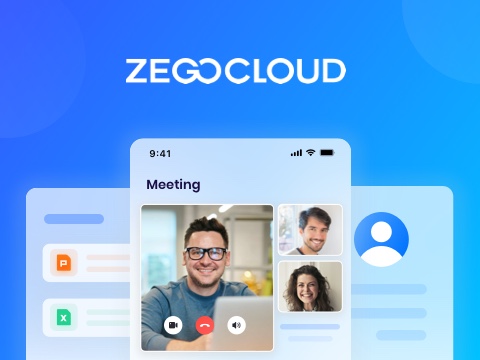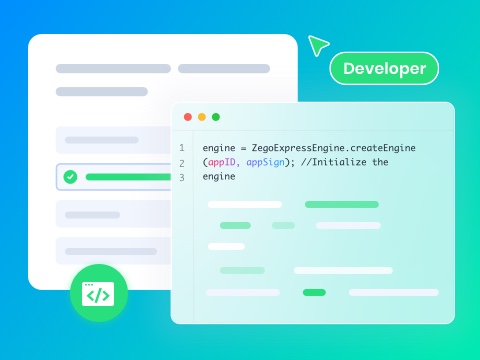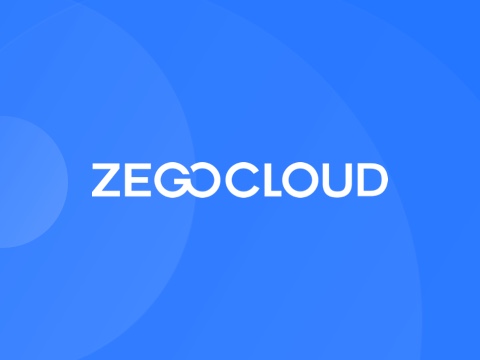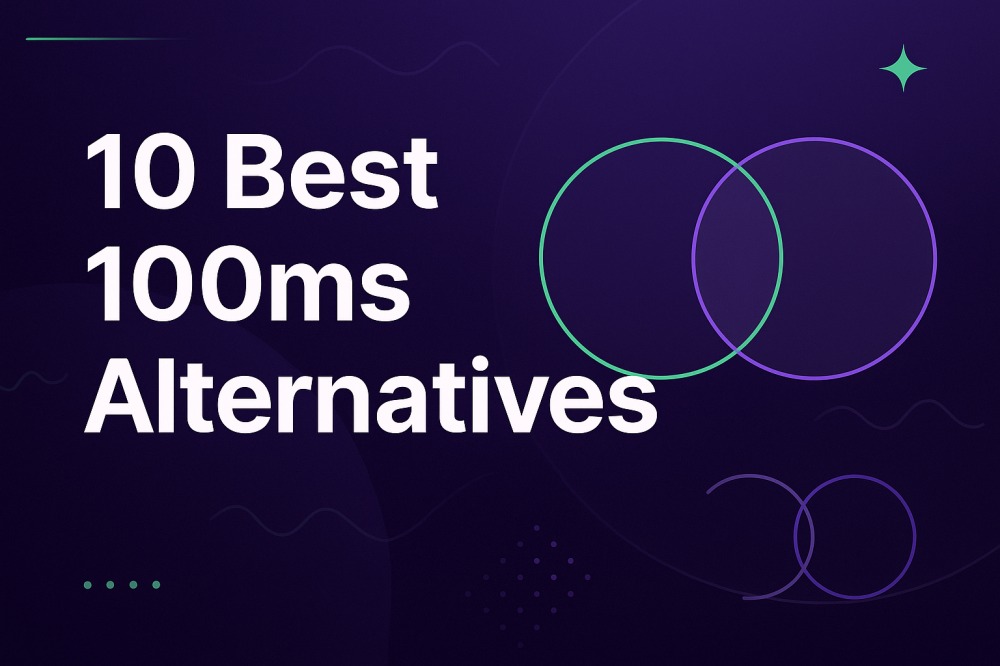Are you searching for the best live video and real-time engagement platform in 2025 and can’t find one? While 100ms.live has been a popular choice, evolving needs call for more versatile, feature-rich, and cost-effective solutions. Hence, whether you are creating an app or hosting virtual events, seeking the 100ms alternatives is the dependable choice, which will be covered in this guide.
What is 100ms?
100ms.live is a cloud platform and SDK suite that developers use to embed interactive live streaming, video, and audio call features into mobile apps. Moreover, it helps in targeting use cases like video conferencing, webinars, classrooms, telehealth, events, and social live streaming. For that, it offers low-latency WebRTC-based real-time communication for 1:1 to large multiparty sessions.
Additionally, the platform offers built-in live streaming with RTMP output and HLS for scalable broadcasts. Besides, it provides cloud recording for on-demand playback or compliance, along with external streaming and simulcasting options. To ensure control over participants, it also features role-based moderation, while chat and data channels enable interactivity.
Why Do You Need a 100ms Alternative?
Before you look for 100ms competitors, have you ever wondered why you need a substitute for this cloud platform? Hence, to answer that, this section offers you 5 different reasons, highlighting the need to look for better options.
- Infrastructure Control and Self-Hosting Needs: Teams that require on-premises deployment, private cloud, or complete control over their media infrastructure need an open-source or self-hosted solution. However, 100ms is a fully managed platform that is designed for quick deployment, but offers less flexibility for deep infrastructure customization. It also has strict data residency requirements compared to self-hosted options.
- Flexibility vs “Batteries-Included” Trade-Offs: Looking for the best alternative to 100ms is also vital because prebuilt UIKits, roles, and managed media pipelines of 100ms can limit highly specialized workflows. Whereas some platforms provide lower-level controls and enable the teams to fine-tune the media behavior.
- Feature Gaps for Specific Scenarios: Some alternatives offer larger extension ecosystems with ready-made effects like virtual backgrounds, noise suppression, and AI tools, whereas 100ms requires integrations. Not just that, extremely high publisher counts or unique topologies may need custom SFUs.
- Scale Patterns and Latency Expectations: 100ms documentation notes practical limits for interactive WebRTC rooms, such as supporting around 100 participants with audio/video enabled. HLS broadcasts with delays of about 10–12 seconds are not suitable for apps requiring ultra-low-latency broadcasts or highly customized layouts.
- Pricing Model and Vendor Risk Considerations: 100ms can become expensive at very high usage levels, and some note its smaller vendor size as a risk. Hence, teams seeking predictable costs through self-hosting or the assurance of a larger provider’s SLA may look for 100ms alternatives.
What to Consider for a 100ms Alternative?
Choosing a 100ms.live alternative is not as easy as it seems since each platform comes with different strengths, trade-offs, and pricing models. Therefore, we’ve given basic yet essential factors in this section that you can consider while picking a suitable option.
| Factor | What To Check | Why It Matters |
|---|---|---|
| Hosting/Control | Managed vs Self-hosted | When looking for the 100ms alternatives, having managed SDKs will offer faster development. Moreover, self-hosted options provide custom routing policies, on-prem or private cloud compliance, and predictable infrastructure ownership. |
| Latency Model | Real-time vs Broadcast | Interactive WebRTC works well for the sub-second latency in small to medium rooms, whereas HLS has ~10–12 second delay. Hence, verify sub-second broadcast support if your use case demands it. |
| Feature Coverage | Telephony, Effects, AI | In 100ms.live alternatives, some platforms include PSTN-style ringing, call-kit features, rich effects, and AI noise suppression. Thus, having these aspects is vital, as it ensures they are built and can be integrated easily without any complex custom work. |
| Streaming Options | RTMP/HLS, Simulcast | They are essential for hybrid events with an interactive stage and a large audience. Also, help in checking for outputs like RTMP and HLS, cloud recording, and CDN support to ensure scalability and reliability. |
| Pricing | Usage vs Infra Costs | In some alternatives to 100ms, high usage can make per-minute pricing costly. Therefore, self-hosting options can help developers shift costs to infrastructure and staffing. Also, consider the long-term expenses, including regional egress and recording/storage fees. |
Top 10 100ms Competitors in 2025
If you are on the hunt for the 100ms competitors, this section has got you covered by offering 10 foremost options. Moreover, to help you make the best choice, the following details provide key information, pros, and cons.
1. ZEGOCLOUD
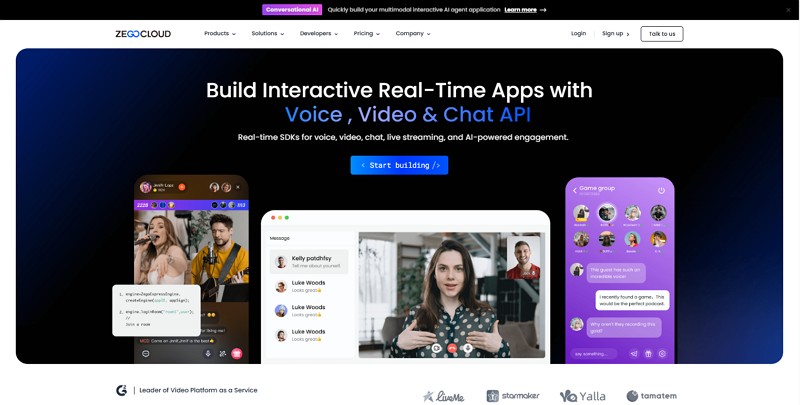
Offering 300ms of average global latency, with the best record of 79ms, ZEGOCLOUD offers you a full suite of Video, Audio, In-app, and Live Streaming APIs. Moreover, with 99.99% of uptime, the platform claims to accommodate 10,000 participants in video calls and 10,000,000+ viewers in live streams. ZEGOCLOUD also enables developers to provide consumers with communication-rich features, including push notifications and rich media attachments.
So, regardless of the SDKs one integrates into its application, users can offer global coverage of 15,000+ devices with ZEGOCLOUD. In terms of live streaming, users can enjoy virtual gifting, co-hosting, and live stream forwarding, etc., with a low latency of 600ms – 1s. Moreover, the AI Effects API enables you to have an appealing video and live streaming experience by using features like face beautification, filters, etc.
Key Features
- Build chatbots and AI companions with a custom LLM and RAG knowledge base.
- Enables users to modify the AI agent’s prompt within 500ms to issue a new command.
- Supports text-to-image generation in chat and texts with its Text-to-Image Generation Model.
- Comes with AI noise reduction and echo reduction features when interacting with AI on a voice call.
- Transit from video to audio when interacting with AI agents in a group or single chat.
Pros
- Allows you to delete chats and edit prompts while communicating with AI.
- Developers can use the 20+ prebuilt UIKits, rather than starting from scratch.
- Upload a video and create a 2.5D digital human and clone a character’s appearance 1:1.
- When the user isn’t speaking, the system reduces concurrent resource usage and cuts ASR costs by over 50%.
Con
- Plan-based limits on features like chat MAUs, concurrent users, group sizes, and room counts.
Pricing Plans
| Voice Call | Starting at $0.99/1,000 participant minutes |
|---|---|
| Video Call | Starting at $3.99/1,000 participant minutes |
| Live Streaming | Starting at $0.39/1,000 minutes |
| In-App Chat | $99 – 10000 MAU |
2. Agora
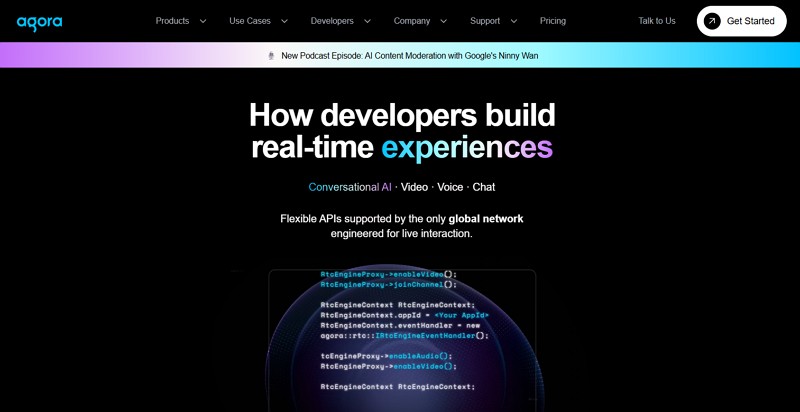
Among the 100ms competitors, it comes with SDKs and APIs for interactive video, voice, and streaming on web/mobile via a global low-latency SD-RTN. Additionally, it supports WebRTC-based multiparty audio/video with adaptive bitrate and network resilience. Users can benefit from screen sharing and data channels alongside the A/V for seamless collaboration. It also offers cross-platform SDKs, including Web, iOS, Android, plus frameworks like React Native.
Key Features
- Developers can manage host/audience roles and integrate co-hosting and guest invites.
- Designed for high viewer counts with low-latency streaming due to Agora’s global edge network.
- Stream to external platforms and CDNs while keeping interactive stages.
Pros
- Uses codec optimizations, simulcast layers, and network fallback to maintain continuity.
- There is built-in noise suppression and voice enhancement for noisy environments.
Cons
- A maximum of 20 API calls per second/client for the Signaling SDK.
- High concurrent video streams (17+) strain CPU/GPU, requiring workarounds for large layouts.
Pricing Plans
| Video Calling | Starting at $3.99 per 1000 minutes |
|---|---|
| Voice Calling | Starting at $0.99 per 1000 minutes |
| Interactive Live Streaming | Starting at $0.99 per 1000 minutes |
3. Twilio
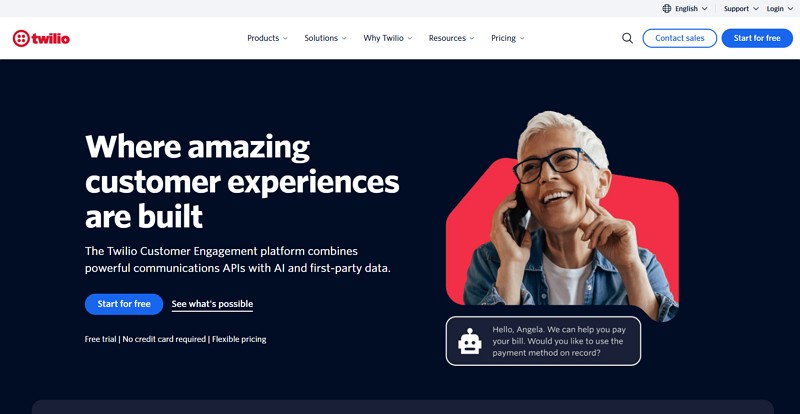
It’s another substitute among the best 100ms.live alternatives as it’s a WebRTC-based platform with SDKs for JavaScript, iOS, and Android. Additionally, it enables real-time video in applications, manages signaling, media streaming, and user access control. Here, video rooms are the central unit as they can support 50 participants per room via an SFU. Moreover, each publisher can upload a single stream to the SFU, which then distributes to minimize bandwidth usage.
Key Features
- Has an adaptive bitrate and a Network Bandwidth Profile API to prioritize essential tracks.
- Network Quality API monitors the participant network health to improve UX under changing situations.
- Composition APIs create MP4/WebM files, which are stored securely in Twilio or S3.
Pros
- Server-side recording captures each participant’s audio, video, and data separately.
- Virtual backgrounds and AI-powered noise cancellation help in noisy environments.
Cons
- Twilio Video has a limited video room capacity of only 50 current participants.
- Polished layouts need extra backend logic and post-processing beyond the API.
Pricing Plans
| Voice API | Starting at $0.0085 for receiving and $0.014 for making calls |
|---|---|
| Video API | Starting at $0.004 per minute per participant |
| SMS API | Starting from $0.0083 for a message |
4. Vonage Communications APIs (TokBox)
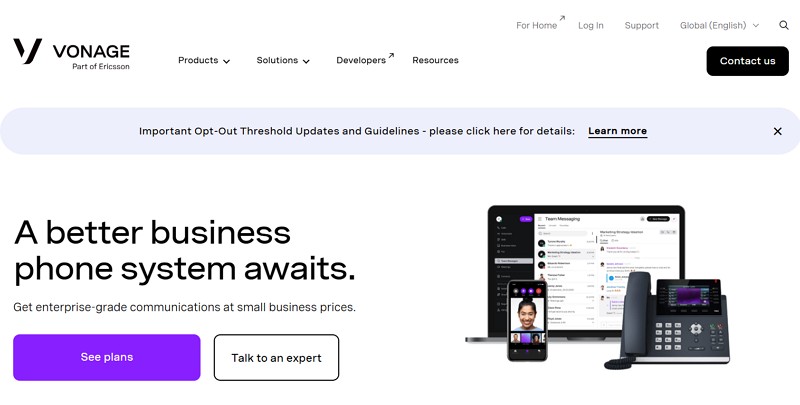
Within the list of 100ms competitors, it’s a WebRTC-based video API that offers client-side SDKs for Web, iOS, Android, Windows, Linux, and server SDKs. Additionally, its developer tools include a browser-based playground to test sessions, screen share, broadcasting, SIP, and connectivity without coding. Besides, the platform comes with features like multiparty interactive video and voice with session-based publish/subscribe.
Key Features
- Provides network resilience and quality monitoring, with SDK update to adjust UI and bitrate.
- Server-side archiving records full or individual tracks and can be started via SDKs.
- Archive options let you choose audio/video, resolution, and output mode.
Pros
- It broadcasts to one HLS and multiple RTMP endpoints concurrently.
- For events and webinars that require interaction through CDN or OTT workflows.
Cons
- Connecting PSTN/IVR with WebRTC adds infrastructure, testing, and cost.
- Support varies; maintaining parity needs SDK updates and ongoing QA across devices.
Pricing Plans
| Video API | $0.0041 per participant per minute |
|---|---|
| SMS API | $0.00809/message |
| Voice API | $0.01446/minute |
| In-App Messaging API | $0.00080/message sent |
5. VideoSDK

From multiple 100ms alternatives, VideoSDK features innovative SDKs and APIs for live streaming, on-demand video workflows, and video/ voice chat. Additionally, the platform targets the web and mobile applications while offering cross-platform support and low-latency infrastructure. It also claims to accommodate thousands of participants in video and live streaming sessions while limiting concurrent A/V senders.
Key Features
- For interactive host-to-audience experiences, it supports multiple simultaneous hosts up to 100.
- Scale to over 100K concurrent viewers with adaptive bitrate streaming and fast channel switching.
- Engagement features include reactions, gifts, chat, polls, hand raise, AI virtual backgrounds, etc.
Pros
- RTMP outputs to 20+ platforms at 1080p and custom endpoints for multi-streaming.
- Allow uploading, transcoding to multiple resolutions, and CDN delivery with adaptive playback.
Cons
- It claims sub-second latency, 100K+ viewers, and multiple hosts; performance depends on topology.
- Supports recording/streaming, but broadcast-level productions need extra workflows, orchestration, and post-processing.
Pricing Plans
| Audio Calls | $0.0006/participant-minute |
|---|---|
| Video Calls | $0.003/participant-minute |
| Live Streaming | $0.0015/viewer-minute |
6. Whereby

In the race for the best alternative to 100ms, Whereby offers developers prebuilt UI and customizable SDKs for enabling fast integration with a few code lines. Furthermore, it comes with other features like cloud recording, pre-call device checks, breakout groups, file sharing, chat, and transcriptions. Users can also improve accessibility through live captions, session transcriptions, and ongoing inclusive improvements.
Key Features
- Insights Suite lets you track and analyze, with exportable data and filters for cost.
- Recent updates include new language options, a highlight speaker feature, and UI toggles.
- Browser SDK supports breakout groups, letting hosts divide participants into smaller sessions.
Pros
- Provides European hosting and meets ISO 27001, HIPAA, and GDPR standards.
- Claims to provide 200 attendees on Business and unlimited recording on Pro plans.
Cons
- Prebuilt experience accelerates launches but provides less customization depth than full RTC toolkits.
- Live captions are improving, but may lack accuracy and languages without third-party integration.
Pricing Plans
| Build | $9.99 per month |
|---|
7. Daily.co
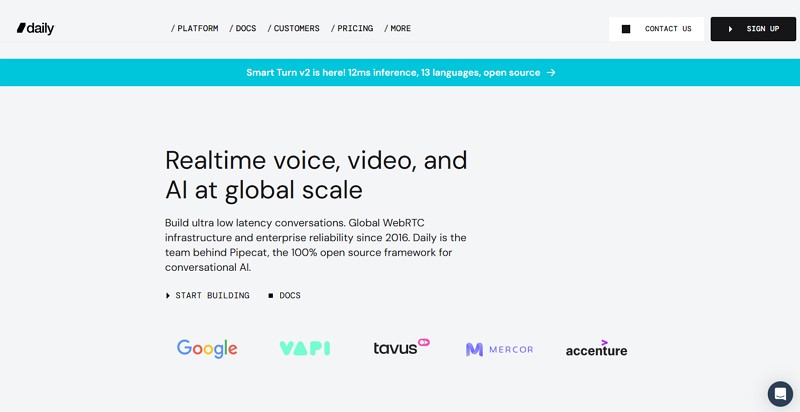
Among the top-notch 100ms competitors, this is a developer-focused platform for real-time voice, video, live streaming, and AI workflows. Additionally, it provides Web, iOS, and Android SDKs along with a prebuilt embed for adding calls instantly. Unlike other tools, it comes with 2 build paths that include Daily Prebuilt and Client SDKs/REST API. Among them, the Daily Prebuilt is a hosted call UI via iframe/component for rapid deployment.
Key Features
- Supports multiparty calls with adaptive bitrate, simulcast, and bandwidth management.
- Its worldwide network delivers fast, reliable sessions with enterprise-grade performance.
- It claims to comply with the SOC 2 Type II, HIPAA, and GDPR.
Pros
- Optimizes user experience on limited networks through pre-calls and automatic bandwidth management.
- Has a drop-in UI with Screen Sharing, chat, breakout rooms, and mobile-responsive layouts.
Cons
- Multi-instance recording needs SFU-routed calls, requiring API management of instances and lifecycle.
- Daily Prebuilt speeds setup but limits customization; advanced production needs the custom SDK.
Pricing Plans
| Video & Audio Calls | $0.004/participant-minute |
|---|---|
| Live Streaming | $0.03/participant-minute |
| Audio Calls | $0.00099/participant-minute |
8. EnableX
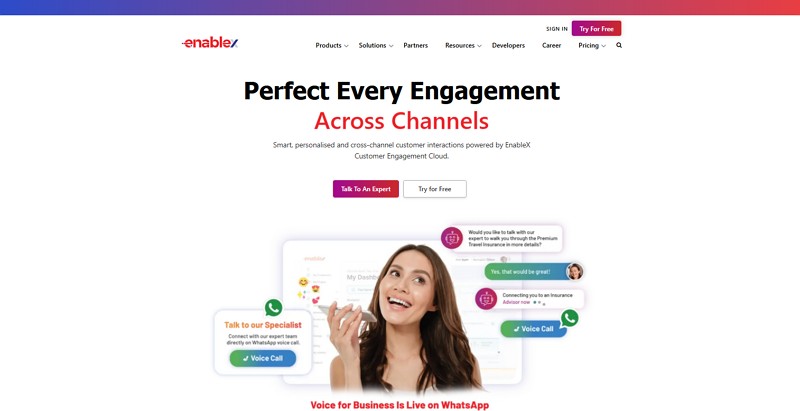
Being a CPaaS platform, it’s another best option among 100ms.live alternatives that offer public cloud, private cloud, and on‑premises deployment models. Additionally, it comes with WebTRC-based multipart voice and video call features with quality management tools. It also enables users to create a group room that can support up to 500 participants for meetings and around 1000 for webinars.
Key Features
- The sessions will be encrypted because of DLS and HIPAA/GDPR-aligned security posture.
- PSTN/SIP support allows voice calls to connect seamlessly with video conferences.
- Support for recording individual participant streams or live composite recordings with auto and on-demand controls.
Pros
- WebRTC for low-latency interactive streams and HLS for rooms with a large audience.
- Fan-out distribution to millions of viewers, it supports RTMP output to CDNs and platforms.
Cons
- Broadcasting and live recording/composition require routed media and server-side processing.
- Many camera-on tiles strain client resources; large rooms need active-speaker layouts and pagination.
Pricing Plans
| Video | $0.004 per participant per min |
|---|---|
| Voice | Make Calls: $0.0216 per min, Receive Calls: $0.007 per min |
9. SignalWire
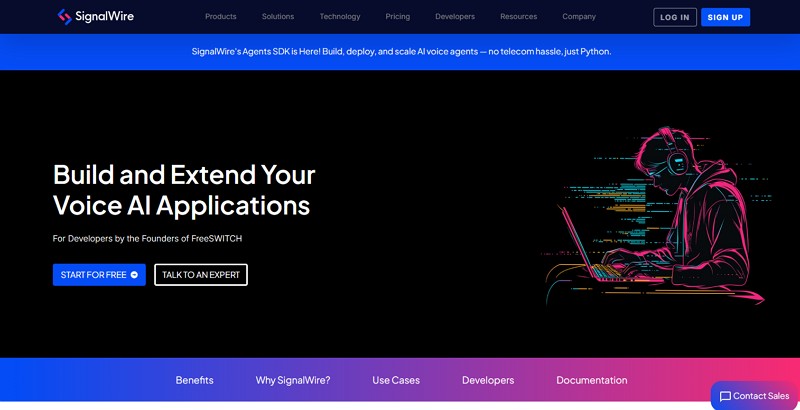
When looking for the best alternative to 100ms, consider this option, as it mixes all participant audio/video server-side, sending one unified stream per client. Additionally, having this facility lowers the CPU/GPU and bandwidth to prevent rendering issues while enabling sub-50ms latency. Besides, it can accommodate and offer support for 300 active participants per room, with hundreds of rooms running concurrently.
Key Features
- 2 build options, and the prebuilt rooms enable quick setup, while the SDK/API offers complete customization.
- All the event-focused features include consistent layout, preview, and recording controls.
- Native chat and SIP/PSTN features help enhance the video room’s interaction with telephony options.
Pros
- Users can benefit from features like dial-in, dial-out, SMS invites, and basic messaging.
- Supports integrating NLP or computer vision models with CRM, LMS, and backend systems.
Cons
- MCU limits layout flexibility, centralizing processing compared to customizable SFU approaches.
- Supports telephony/messaging, but full journeys need custom backend work and extra engineering.
Pricing Plans
| Voice API | INBOUND/min: $0.00660, OUTBOUND/min: $0.00800 |
|---|---|
| Messaging API | Local: $0.50/month |
| Video Conferencing API | $0.00450 per participant per min |
10. AWS Chime SDK
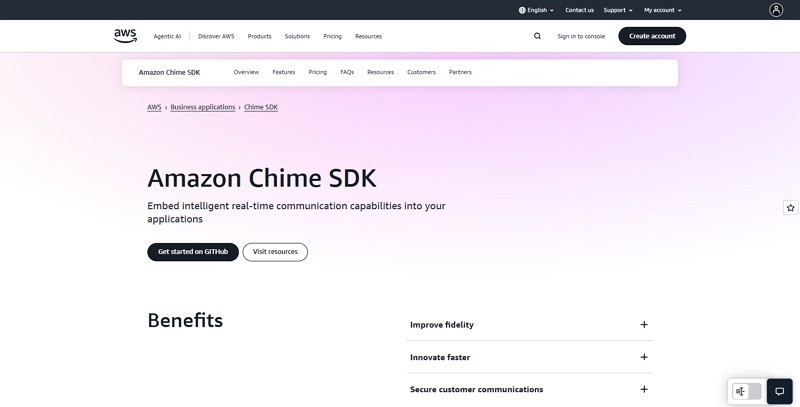
AWS Chime SDK is among the best alternatives to 100ms, enabling multiparty meetings with real-time audio, video, and content sharing. Furthermore, the platform claims that audio is server-mixed and delivered to each attendee by using Opus up to 48 kHz with bitrates up to 128 kbps stereo. Moreover, echo reduction and Voice focus are ideal options for noisy surroundings.
Key Features
- Video is SFU forwarded with publish/subscribe models and allows each attendee to share one camera stream.
- It also supports 25 simultaneous videos per meeting at the resolution of up to 1280×720@30fps.
- Web JS SDK supports simulcast, providing up to 15 fps per layer for optimized performance.
Pros
- 1:1, group, and broadcast chat channels with up to 100,000 members each.
- Channel flows let developers process messages via AWS Lambda for tasks like redaction.
Cons
- Chime SDK doesn’t offer one-click RTMP/HLS; large-scale streaming requires Voice Connector.
- PSTN Audio/Voice Connector enables dial-in/out, but requires custom logic and compliance handling.
Pricing Plans
- Contact the Support Team
Conclusion
Summing up, if you want to create a web or mobile-based application, knowing 100ms alternatives is a must, as this platform comes with numerous limitations. Therefore, this guide has reviewed the 10 best options, highlighting the key features, pros, and cons of each. Among all, we suggest using ZEGOCLOUD, not just because it is budget-friendly, but also because it supports robust features, scalability, and ease of integration.
FAQ
Q1: Why do businesses look for 100ms alternatives?
Most businesses search for 100ms alternatives when pricing, features, or scalability don’t fully match their needs. They want a solution that better fits their budget and use case.
Q2: Are there cheaper alternatives to 100ms?
Yes. Cost is one of the biggest reasons teams explore alternatives. Some platforms provide more generous free tiers or lower per-minute rates compared to 100ms.
Q3: Can I find an alternative to 100ms for large-scale events?
Definitely. Businesses often compare alternatives if they need ultra-low latency streaming, webinars, or conferences with thousands of participants that 100ms may not fully optimize for.
Let’s Build APP Together
Start building with real-time video, voice & chat SDK for apps today!



